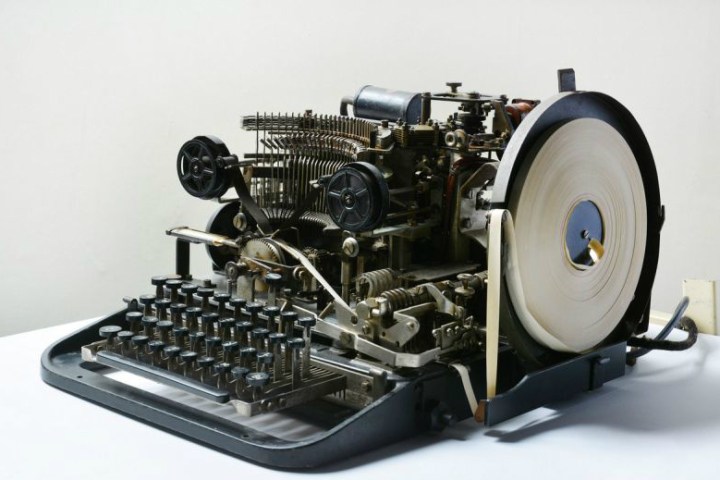
The device, known as the Lorenz teleprinter, was spotted online by a volunteer at the National Museum of Computing (NMC), which has now successfully purchased it from its owner.
Almost 80 years since it was used to complete an intricate Nazi coding machine known as the Lorenz cipher, a woman in the U.K. suburb of Essex found the teleprinter gathering dust in her shed. Mistaking it for an ancient telegram machine, the owner placed an ad for it on eBay.
Recognizing it as a potential wartime relic, the NMC volunteers got in touch with the seller, driving down to Essex to verify it for themselves. “The person took us down the garden to the shed and in the shed was the Lorenz teleprinter in its original carrying case,” said John Whetter, a volunteer engineer with the museum. The NMC then snapped it up for just £9.50 (about $14).
The artifact’s true value became clear once it was cleaned at the NMC’s site in Bletchley Park. The restoration process led to the discovery of swastika detailing on the device, and even a special key for the runic Waffen-SS insignia, reports the Guardian.
Consequently, the NMC is hoping it can use the teleprinter to complete the Nazi coding device. It has since received a long-term loan of the Lorenz SZ42 cipher machine from the Norwegian Armed Forces Museum in Oslo to aid it in its rebuilding efforts. The NMC has also reached out to the British public to help it find the missing pieces of the machine, in particular its drive motor.
The encoded transmissions sent from the Lorenz cipher during the Second World War are described as even more complicated than the Enigma code. Dubbed the ‘Tunny’ by British cryptographers, the machine’s code was eventually cracked by mathematician Bill Tutte. By January 1942, Tutte’s team of cryptographers deciphered the entire logical structure of the device. The discovery led to the creation of the Colossus, the world’s first programmable computer system, designed by British engineer Tommy Flowers, to determine the wheel positions on the Lorenz Cipher. The Colossus allowed for a crucial deduction in the time taken to decrypt Nazi messages, and is now described by historians as one of the biggest intellectual feats of World War II.
The NMC is hoping to recreate the encryption and decryption method at a special event on Friday.


